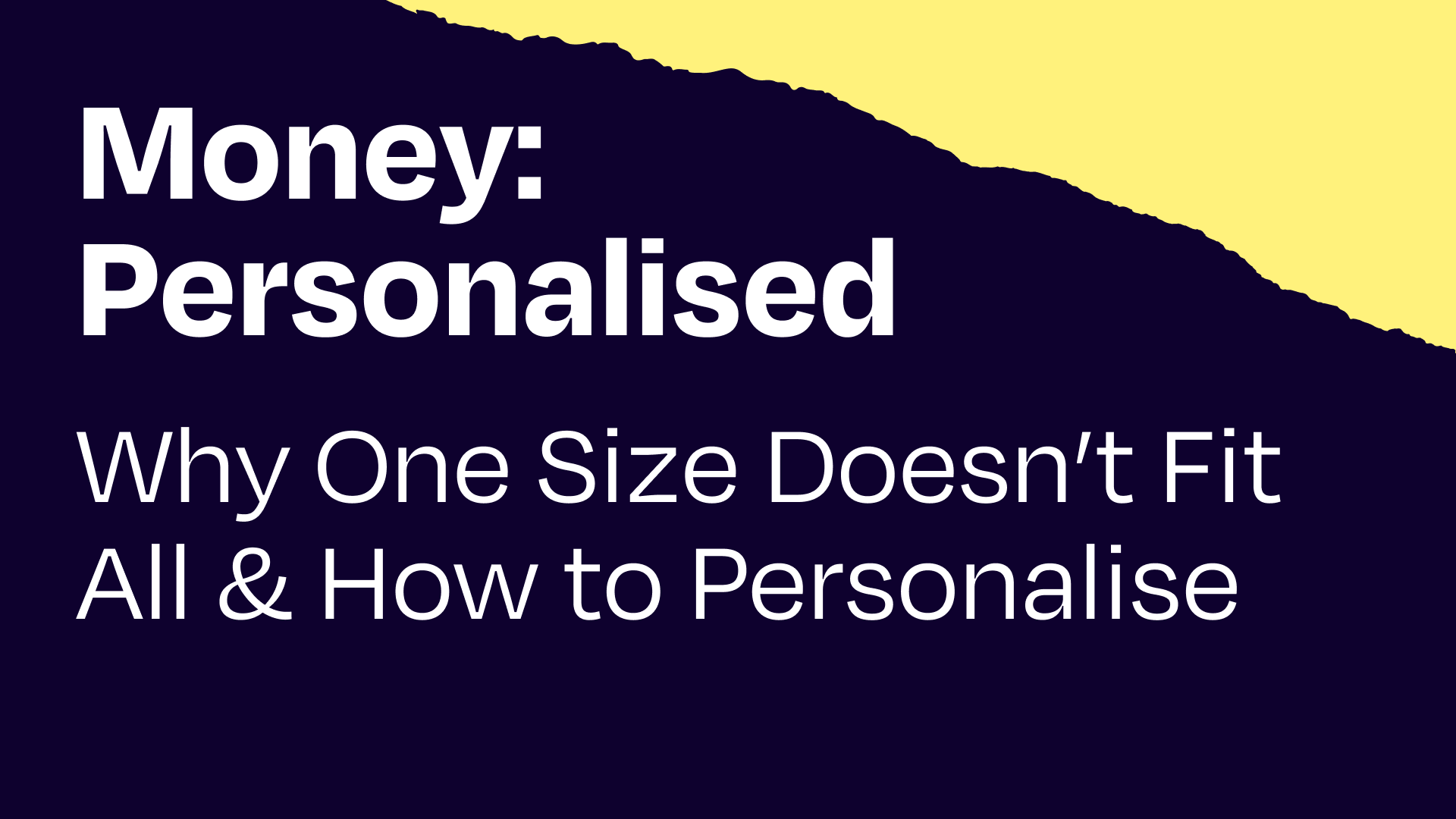So, you’re building a financial wellbeing strategy, to cover your 300 employees and help them reach their financial goals. The problem is your employees will have at least 1,000 goals between them. Does that mean you need 1,000 strategies?
Fear not – new approaches are emerging to bring mass personalisation to employee financial wellbeing.
The old way: start with the product
For years, the go-to strategy has been to introduce specific financial products as benefits (for example, a pension or an insurance policy) and then to educate employees about what’s available.
That’s a great foundation, but by focusing on products, we often fail to answer the bigger questions that keep employees up at night.
If I attend a pension seminar, I might learn how I’ll get £1 in my pension for every 58p I could have earned otherwise. I might even be given a projection of what it will be worth when I retire.
But I’ll be no wiser about whether I’m on track for a comfortable retirement. How much will I need? What will my other pensions and investments be worth? What will I do with my property? How much will I have spent helping kids through university?
And, if I’m years from retirement, it will do little to help me with my more immediate financial concerns on my mind.
A new approach: start with life stage
An increasingly common approach, which puts employees rather than products first, is to produce content or run webinars which focus on specific life stages or life goals. Retirement seminars are common. Less common, but on the rise, are topics such as “getting on the property ladder” or “meeting the costs of children.”
Of course, there are some life goals that get little public airing within a workplace, such as “getting out of debt” or “preparing your finances to start a family” or “managing your finances during separation.”
By engaging employees at a specific life stage, you help people consider the full breadth of financial options available to them, in a way that resonates for them.
But even within a life stage, everybody is different. People have different financial situations and different life goals. Also, the session can leave as many questions as answers. People may understand they need to look at their cash savings, their investment ISAs and their pensions … but how exactly should they decide how much to put in each? How exactly do they balance across their short, medium and long term goals?
When it comes to money, it only takes a shred of doubt for inertia to win.
A better model: start with the individual
The ideal strategy is to engage each employee individually, and build a strategy for each of them. By starting with their questions, their particular financial situation and their specific life goals, you can create true financial peace of mind.
Historically, that would be very costly. But services like Octopus Money now make it possible for up to 90% less cost (and in a way that’s cost neutral for employers). More and more employees are seeing the value of this impartial, 1-to-1 guidance.
To have impact, modern financial wellbeing strategies need to have mass-customisation built in. Each employee is different, and needs to do an entirely different set of things to achieve financial wellbeing.



